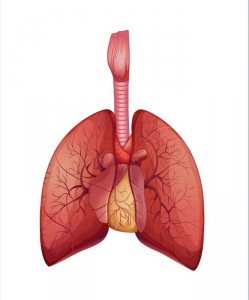Pulmonary Arterial Hypertension in Systemic Sclerosis: Improved Screening Methods Identified

 A collaborative group of researchers, based in Australia and China, have found that early screening for pulmonary arterial hypertension (PAH) in systemic sclerosis (SSc) using two recently developed methods resulted in identification of PAH in 100% of individuals screened. The study, titled A Comparison of the Predictive Accuracy of Three Screening Models for Pulmonary Arterial Hypertension in Systemic Sclerosis appeared January 18th, 2015 in Arthritis Research & Therapy.
A collaborative group of researchers, based in Australia and China, have found that early screening for pulmonary arterial hypertension (PAH) in systemic sclerosis (SSc) using two recently developed methods resulted in identification of PAH in 100% of individuals screened. The study, titled A Comparison of the Predictive Accuracy of Three Screening Models for Pulmonary Arterial Hypertension in Systemic Sclerosis appeared January 18th, 2015 in Arthritis Research & Therapy.
SSc is disease of the connective tissue that involves many different bodily systems. It is characterized by diseased blood vessels (vasculopathy) and fibrosis — the thickening and scarring of connective tissue. PAH refers to abnormally high blood pressure in the lung arteries. It is one of the most severe problems that can occur in SSc and is also a main cause of death in people with SSc. About half of people with SSc die within three years of developing PAH.
The researchers tested how accurately two recently published screening algorithms (DETECT 2013 and Australian Scleroderma Interest Group (ASIG) 2012) could predict the existence of SSc-associated PAH (SSc-PAH), compared to European Society of Cardiology/Respiratory Society (ESC/ERS 2009) guidelines, a frequently-used measurement. The DETECT algorithm was based on an international study conducted in 62 centers from North America, Europe and Asia, in 466 adults with SSc at risk of PAH. The ASIG is an interest group that has collected data for the last five years at 12 sites across Australia, with data compiled from over 1,000 patients to formulate this algorithm.
[adrotate group=”3″]
Led by Yanjie Hao of the Department of Rheumatology, St Vincent’s Hospital, Melbourne, Australia, the investigators studied 73 SSc patients with possible PAH who were undergoing right heart catheterization (RHC). They used the three different PAH screening models, the DETECT and ASIG algorithms as well as the ESC/ERS 2009 guidelines and compared how effective each one was.
Both the DETECT and ASIG algorithms were equally good at predicting PAH, with 100% accuracy. In contrast, the ESC/ERS guidelines had sensitivity of 96.3%.
The DETECT and ASIG algorithms were better than the ESC/ERS guidelines, and were able to identify all patients with PAH.
The authors concluded “In summary, the DETECT and ASIG algorithms out-perform the ESC/ERS guidelines, with a high sensitivity, which is the most important feature for a screening algorithm, reducing or eliminating missed diagnoses.”
The researchers further noted however, that all of the screening methods performed well, stating “Despite the limitations of the three screening algorithms we evaluated, they each performed reasonably well in detecting SSc-PAH, echoing the sentiments of many experts that any reasonable screening algorithm applied for the early detection of SSc-PAH is better than usual care. That said, accuracy, accessibility and economic considerations are likely to influence the choice of algorithm for SSc-PAH screening.”






